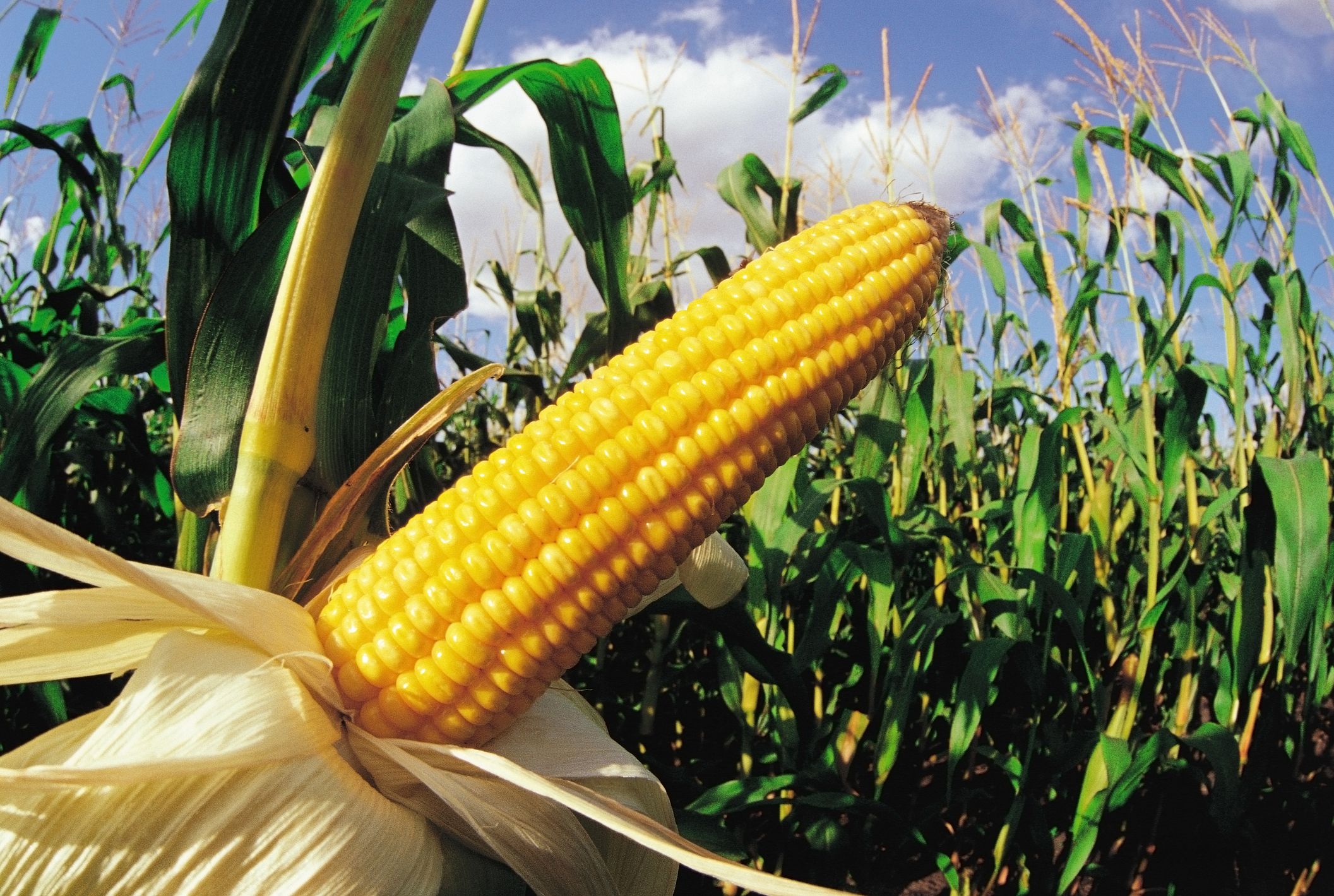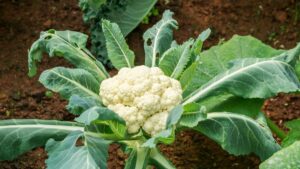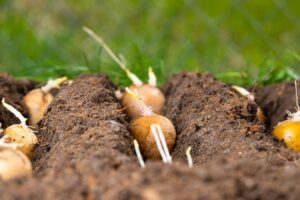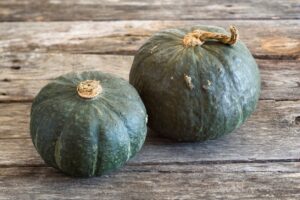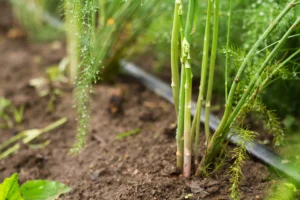How to Grow Corn: A Complete Guide for Home Gardeners
Growing corn at home can be a rewarding experience that connects you with America’s agricultural heritage while providing you with fresh, delicious ears of corn that taste far superior to store-bought varieties. Whether you have a spacious backyard garden or simply a sunny balcony, corn can be grown successfully with the right approach.
This comprehensive guide will walk you through everything you need to know about growing corn at home – from selecting the right varieties to harvesting and storage. By following these tips, you’ll be enjoying your own homegrown corn in no time!
Why Grow Corn at Home?
Before diving into the how-to, let’s consider why growing your own corn is worth the effort:
- Flavor: Freshly harvested corn tastes significantly sweeter and more flavorful than store-bought corn, which begins converting sugar to starch immediately after harvest.
- Variety: You can grow unique, heirloom varieties not found in supermarkets.
- Cost-effective: A single corn seed can produce an ear with hundreds of kernels, offering excellent value.
- Sustainability: Growing your own food reduces carbon footprint and packaging waste.
- Educational: Perfect for teaching children about food production and plant life cycles.
According to the USDA National Agricultural Statistics Service, the US produces over 14 billion bushels of corn annually, making it America’s largest crop. While commercial production is enormous, home gardening accounts for a growing segment of corn cultivation as more Americans pursue food security and sustainability.
Understanding Corn Varieties
Corn (Zea mays) comes in several types, each with distinct characteristics and uses:
Sweet Corn
Most popular for home gardens, sweet corn is eaten fresh and comes in yellow, white, or bicolor varieties. Modern sweet corn varieties are categorized by their sugar content and conversion rate:
- Standard (su): Traditional sweet corn with moderate sugar content.
- Sugar Enhanced (se): Contains more sugar than standard varieties and converts sugar to starch more slowly.
- Supersweet (sh2): Has up to three times the sugar content of standard varieties and retains sweetness longer after harvest.
Field Corn
Primarily grown for livestock feed, ethanol production, and processed food ingredients. Not typically grown in home gardens unless for ornamental purposes or to make cornmeal.
Popcorn
Specialized variety with hard kernel exteriors that trap moisture, causing them to explode when heated.
Ornamental Corn
Grown for decoration, including colorful varieties like “Indian corn” with multicolored kernels.
When selecting corn varieties for your home garden, consider:
- Days to maturity: Range from 60-100 days depending on variety
- Plant height: Some varieties reach 8+ feet, while others are more compact
- Disease resistance: Look for varieties with resistance to common corn diseases
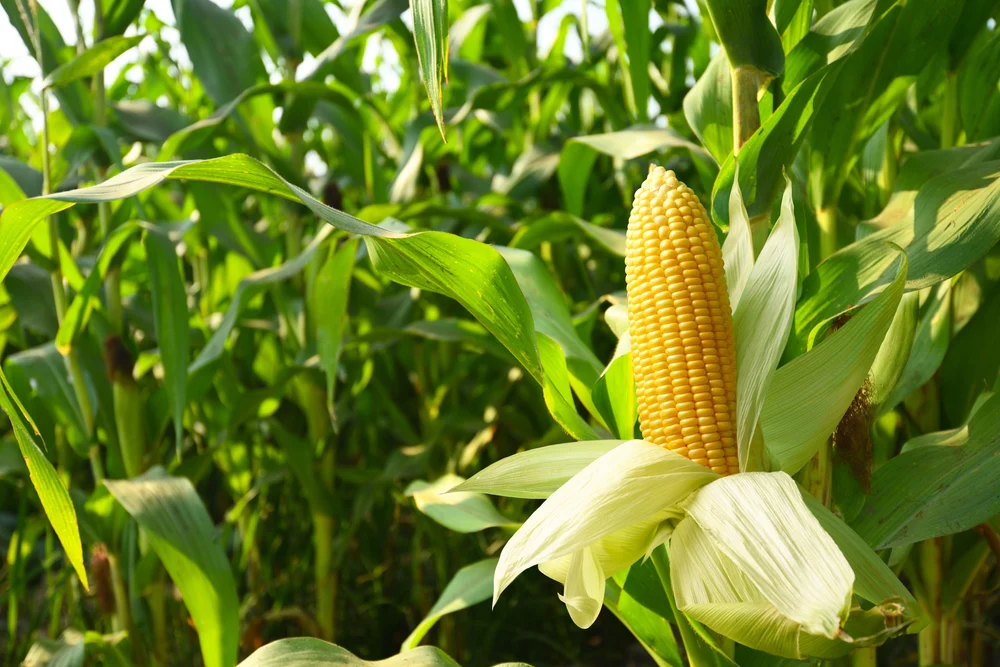
Getting Started: Growing Conditions for Corn
Corn has specific growing requirements that influence its success:
Climate and Timing
Corn is a warm-season crop that requires:
- Soil temperature: At least 60°F (16°C) for germination
- Air temperature: Thrives in 60-95°F (16-35°C) range
- Growing season: Needs frost-free conditions throughout growth cycle
In most of the US, corn is planted after the last spring frost date. According to the USDA Plant Hardiness Zone Map, planting dates vary significantly:
- Zones 3-4: Late May to early June
- Zones 5-6: Mid-May
- Zones 7-8: April to early May
- Zones 9-10: March to April, with a possible second planting in August
Sunlight Requirements
Corn requires:
- Full sun: Minimum 6-8 hours of direct sunlight daily
- Protection: Some afternoon shade in extremely hot climates
Soil Needs
Corn grows best in:
- Soil pH: 6.0-6.8
- Soil type: Well-draining, rich in organic matter
- Nutrients: High nitrogen requirement (corn is a heavy feeder)
Planting Corn in Your Garden
Site Selection
Choose a location that:
- Receives full sun
- Has protection from strong winds
- Offers enough space for block planting
- Has not grown corn in the past 2-3 years (crop rotation helps prevent disease)
Garden Preparation
- Soil testing: Conduct a soil test through your local extension office to determine nutrient levels and pH.
- Soil amendment: Based on test results, incorporate compost or aged manure (2-4 inches) and any recommended amendments.
- Bed preparation: Till or loosen soil to a depth of 8-12 inches.
Planting Methods
Direct Sowing (Recommended Method)
- Timing: Plant when soil temperature reaches at least 60°F (16°C).
- Spacing:
- Plant seeds 1-2 inches deep
- Space seeds 8-12 inches apart in rows
- Space rows 30-36 inches apart
- Pattern: Plant in blocks of at least 4 rows rather than single rows to ensure proper pollination (corn is wind-pollinated).
- Succession planting: For continuous harvest, plant a new block every 2 weeks, or plant varieties with different maturity dates.
Starting Indoors (For Short Growing Seasons)
While not ideal, you can start corn indoors:
- Use biodegradable pots (corn doesn’t transplant well).
- Start seeds 2-3 weeks before last frost date.
- Harden off seedlings before transplanting.
- Transplant when seedlings have 2-3 leaves and soil has warmed.
Container Growing: Corn in Pots
Yes, you can grow corn in containers! While you won’t get the yield of a garden plot, container-grown corn can be successful if you:
Container Selection
- Size: Minimum 5-gallon container per plant, preferably larger
- Material: Any container with drainage holes
- Arrangement: Group containers together to facilitate pollination
Potting Mix
Create a nutrient-rich, moisture-retentive but well-draining mix:
- 60% high-quality potting soil
- 30% compost
- 10% perlite or vermiculite
Container-Friendly Varieties
Not all corn varieties are suitable for containers. Look for:
- Compact varieties: ‘Trinity’, ‘Sweet Painted Mountain’, ‘Blue Jade’
- Early-maturing types: Varieties that mature in 65-75 days
Container Planting Process
- Fill container with potting mix, leaving 1 inch at top.
- Plant 3-4 seeds per 5-gallon container.
- Thin to strongest 1-2 seedlings after emergence.
- Place containers where they’ll receive 6+ hours of sun.
- Keep containers grouped together in blocks for pollination.
Growing Corn Indoors
While challenging, growing corn completely indoors is possible with the right setup:
Indoor Requirements
- Light: High-intensity grow lights providing 14-16 hours daily
- Temperature: Consistent 70-75°F (21-24°C)
- Airflow: Fans to mimic wind for pollination
- Space: Sufficient ceiling height (minimum 6 feet)
- Varieties: Dwarf/container varieties only
Indoor Growing Process
- Use deep containers (minimum 10-12 inches).
- Ensure excellent drainage.
- Provide consistent moisture.
- Hand-pollinate (described later in this guide).
- Support plants if needed as they grow.
Corn Growth Stages and Care
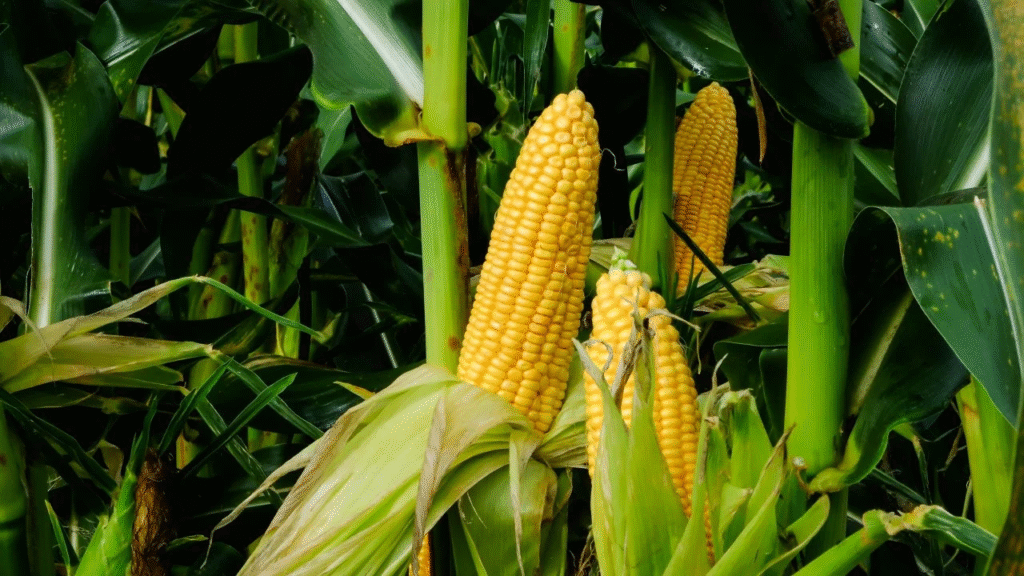
Growth Timeline
The following table outlines corn’s growth stages and care requirements:
| Growth Stage | Time Frame | Plant Appearance | Key Care Requirements |
|---|---|---|---|
| Germination | 7-10 days | Emergence of spike-like leaf | Keep soil consistently moist |
| Early Growth | 2-4 weeks | Development of 3-5 leaves | Begin regular fertilization |
| Vegetative Growth | 5-8 weeks | Rapid stalk growth, multiple leaves | Side-dress with nitrogen, ensure consistent watering |
| Tasseling | 8-10 weeks | Tassels appear at top of plant | Critical watering period, avoid disturbing plants |
| Silking | 9-11 weeks | Silks emerge from ear tips | Hand-pollinate if needed, maintain moisture |
| Ear Development | 11-13 weeks | Ears fill out, silks brown | Continue consistent watering |
| Maturity | 13-20 weeks | Husks dry, kernels full-sized | Reduce watering as ears mature |
Watering Requirements
Corn needs consistent moisture, especially during:
- Germination: Keep soil consistently moist
- Tasseling and silking stages: Critical period requiring 1-2 inches of water weekly
- Ear development: Moisture stress during this period reduces yield and quality
Water deeply rather than frequently, providing about 1-1.5 inches of water weekly, more during hot periods.
Fertilization
Corn is considered a “heavy feeder,” particularly requiring nitrogen:
- At planting: Incorporate balanced fertilizer (10-10-10) according to soil test.
- When plants reach 12 inches: Side-dress with nitrogen-rich fertilizer.
- At tasseling: Additional nitrogen application benefits ear development.
According to the USDA Agricultural Research Service, proper nitrogen management is critical for corn yield and environmental protection. For organic gardeners, fish emulsion, blood meal, or composted manure are excellent nitrogen sources.
Weed Control
Keep corn beds weed-free, especially during the first 6-8 weeks of growth:
- Mulching: Apply 2-3 inches of organic mulch after plants reach 4 inches tall.
- Shallow cultivation: Avoid damaging shallow corn roots.
- Hand weeding: Regular attention prevents weed competition.
Pest and Disease Management
Common corn pests include:
- Corn earworm: Apply mineral oil to silk tips or use Bt (Bacillus thuringiensis).
- European corn borer: Crop rotation and Bt-based products offer control.
- Aphids: Insecticidal soap or neem oil for heavy infestations.
Common diseases include:
- Corn smut: Remove and destroy affected plants.
- Rust: Plant resistant varieties in areas with history of rust.
- Leaf blight: Crop rotation and adequate spacing improve air circulation.
Pollination: Critical for Ear Development
Corn is wind-pollinated, with male flowers (tassels) at the top of the plant and female flowers (silks) emerging from potential ears. For successful pollination:
Natural Pollination
- Plant in blocks rather than rows to improve pollen transfer.
- Minimum 4×4 plant block for adequate pollination.
- Avoid planting different corn varieties within 100 feet unless you want cross-pollination.
Hand Pollination
For container growing or sparse plantings, hand pollination improves yield:
- In morning when tassels are releasing pollen, collect pollen by gently shaking tassels into a paper bag.
- Use a small brush to transfer pollen to silks, or gently shake bag of pollen over exposed silks.
- Repeat for 3-4 consecutive days to ensure complete pollination.
Harvesting Your Homegrown Corn
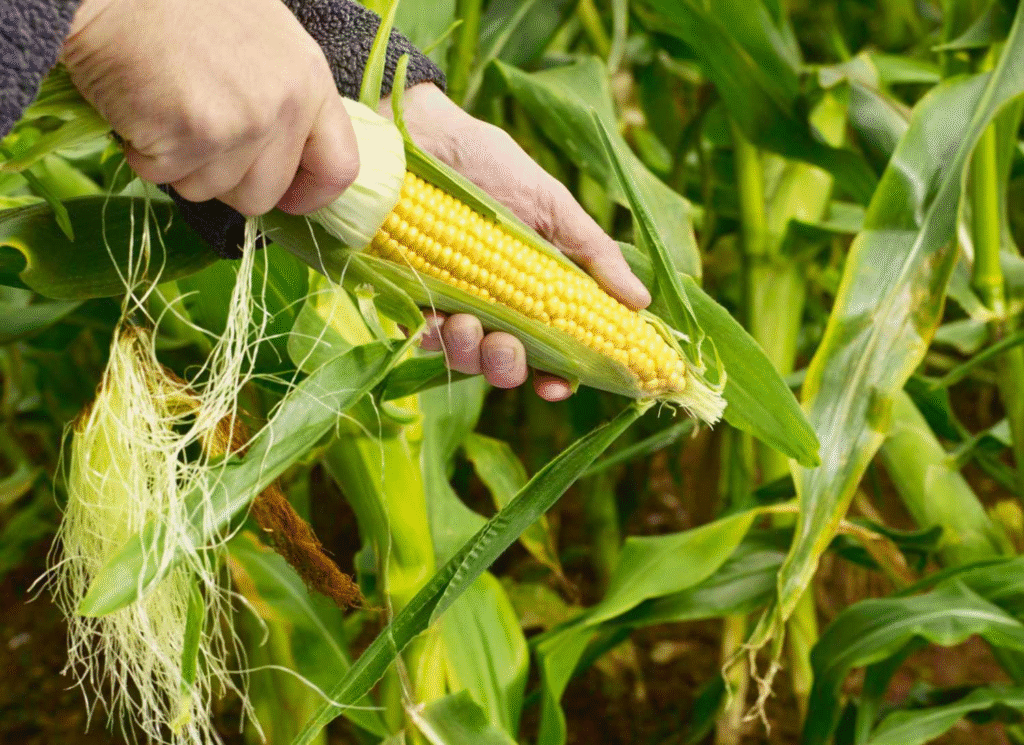
Determining Ripeness
Sweet corn is ready to harvest when:
- Silks have turned brown and dry
- Ears feel full and firm through the husk
- Kernels exude a milky substance when punctured with a fingernail
- Typically 18-24 days after silk first appears
Harvesting Technique
- Grasp the ear firmly.
- Pull down while twisting to separate from stalk.
- Harvest in morning when sugar content is highest.
- Refrigerate immediately to slow sugar-to-starch conversion.
Saving Seeds for Next Season
While hybrid varieties won’t grow true to type, open-pollinated and heirloom varieties can be saved:
- Allow ears to mature fully on plant until husks dry.
- Harvest and remove husks.
- Dry ears in a cool, well-ventilated location for 1-2 weeks.
- Remove kernels by hand and store in airtight container in cool, dry place.
The USDA National Plant Germplasm System maintains collections of corn varieties and provides resources on seed preservation.
Troubleshooting Common Issues
Poor Germination
- Cause: Cold soil, old seeds, planting too deep
- Solution: Wait for warm soil, use fresh seeds, plant 1-2 inches deep
No Ears Forming
- Cause: Poor pollination, nutrient deficiency
- Solution: Hand-pollinate, ensure adequate nitrogen
Partially Filled Ears
- Cause: Incomplete pollination, drought stress
- Solution: Hand-pollinate, maintain consistent moisture
Lodging (Plants Falling Over)
- Cause: Weak stalks, wind damage
- Solution: Mound soil around base, plant in protected area
Conclusion: Enjoying Your Corn Harvest
Successfully growing corn at home connects you with America’s agricultural heritage while providing the incomparable taste of freshly harvested sweet corn. Whether grown in a garden plot, containers on a patio, or indoors under lights, homegrown corn offers a level of flavor and satisfaction that store-bought corn simply cannot match.
By following the guidelines in this article, you can enjoy the process of growing corn from seed to harvest, experiencing firsthand the miracle of transforming a tiny seed into tall, productive plants laden with delicious ears of corn. The effort invested in growing corn pays dividends not just in food production but in the joy and satisfaction of participating in one of humanity’s oldest agricultural traditions.
Start with a small plot, experiment with different varieties, and discover the pleasure of growing this iconic American crop in your own home garden!
